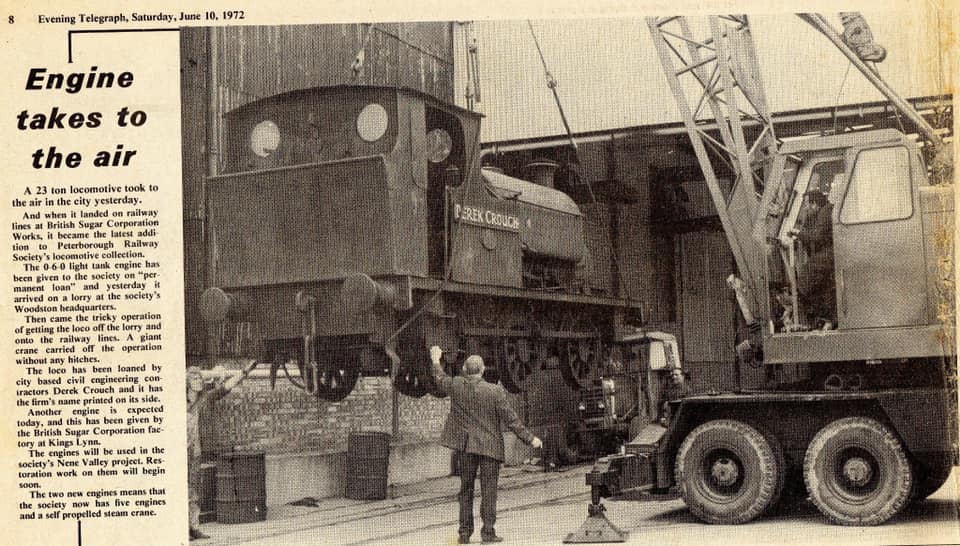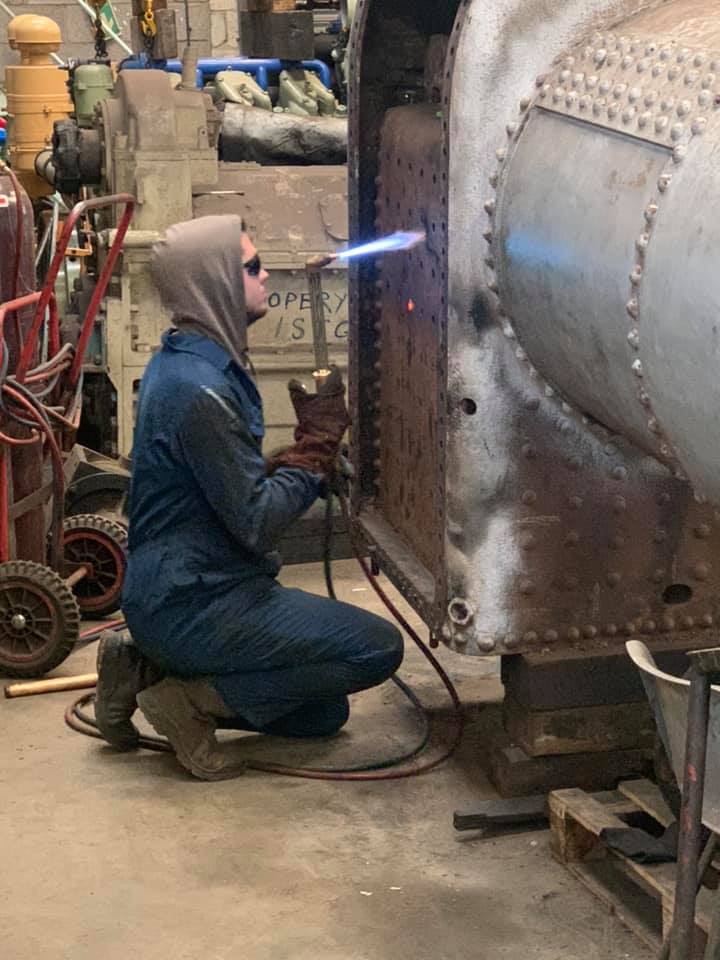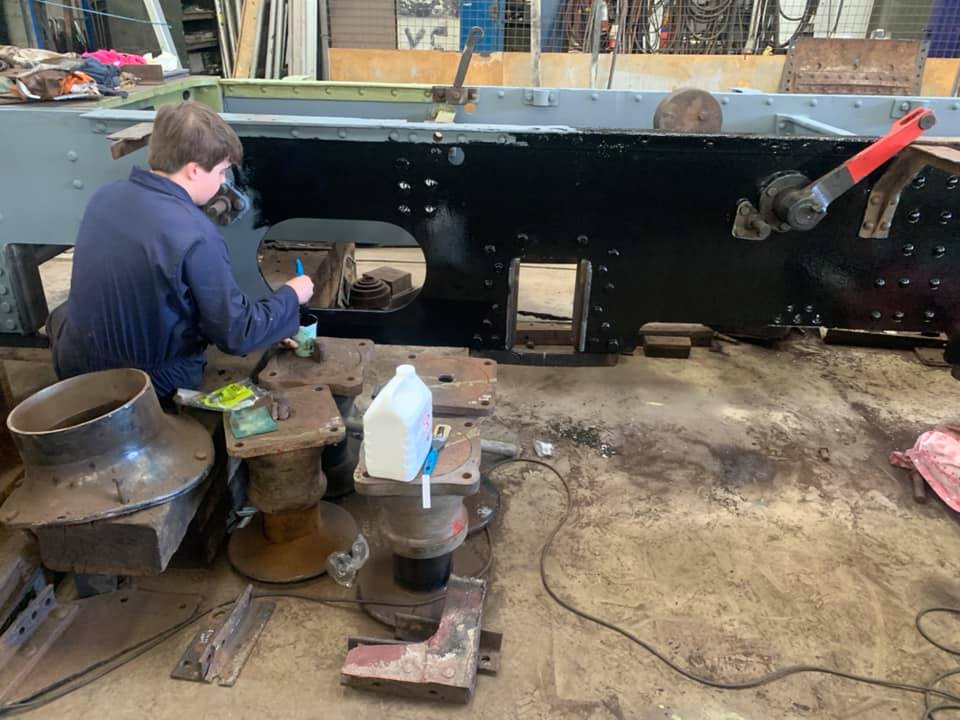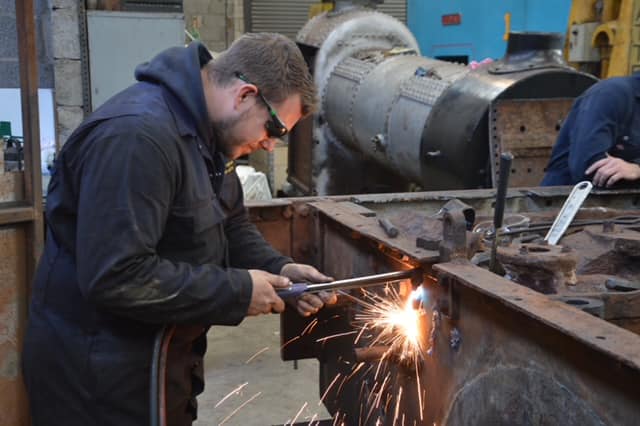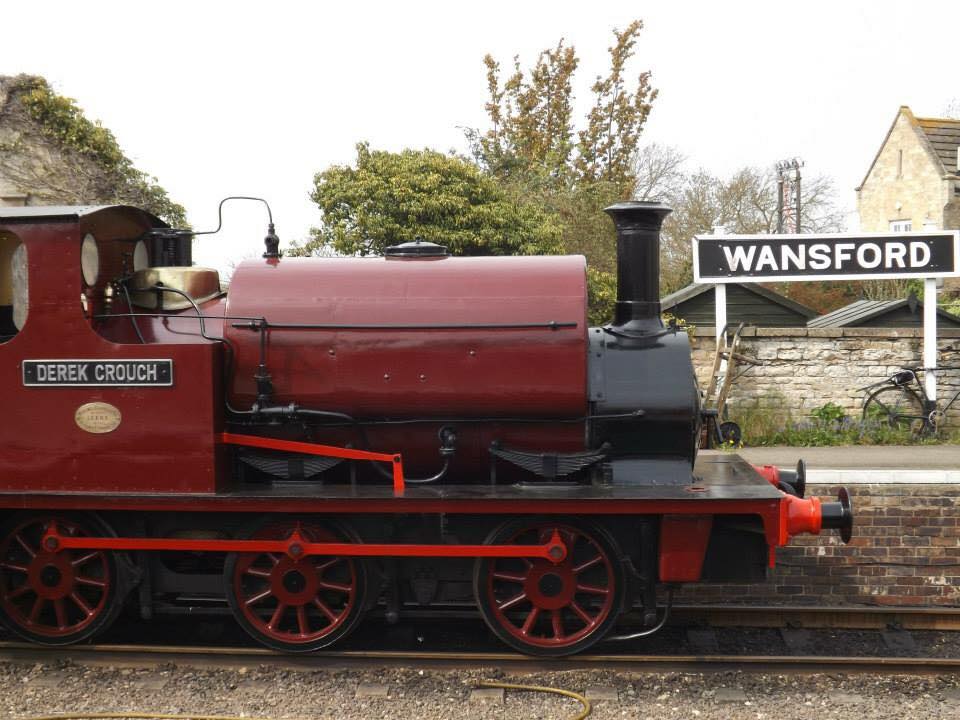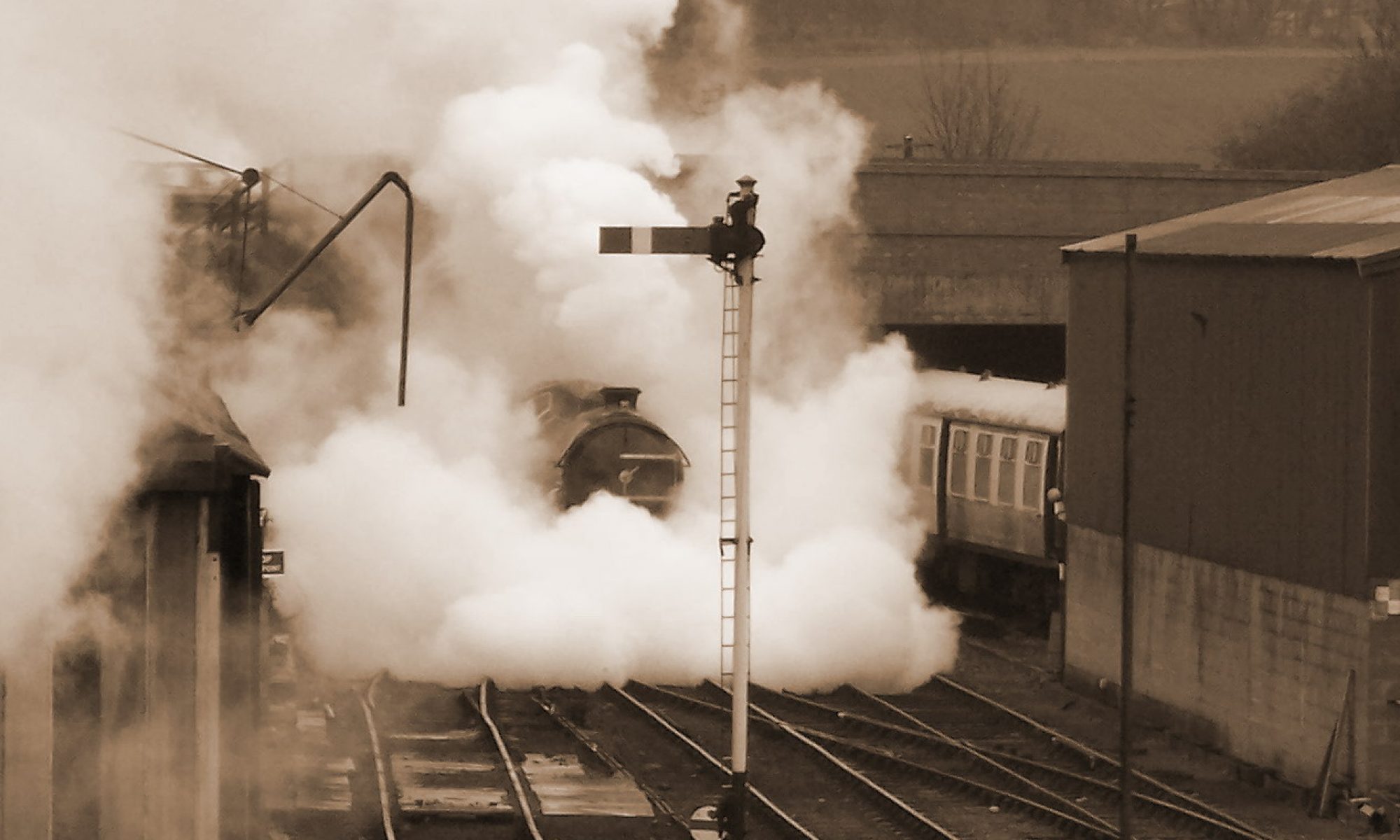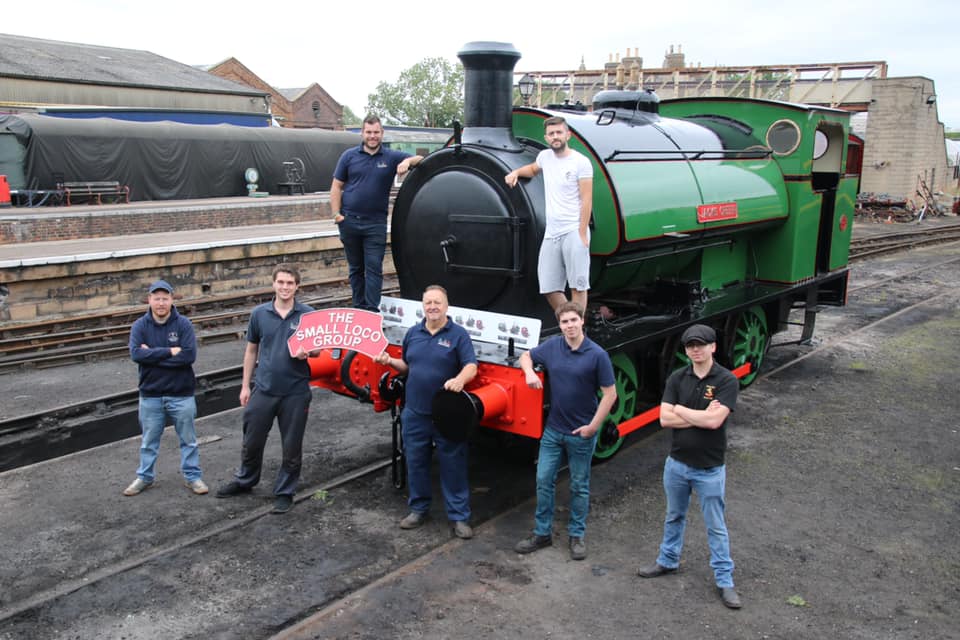
Hudswell Clarke no.1539 ‘Derek Crouch’ – Nathan Wilson
Hudswell Clarke no.1539 is an 0-6-0 saddle tank locomotive of the ‘Countess of Warwick’ class locomotive. The locomotive was delivered new to McAlpine & Sons on the 23rd July 1924, and worked for them on a variety of different contracts across the country including Tilbury and Southampton dock extensions and at Cheddar reservoir.
The loco then passed to John Mowlem & Co. and was named ‘Hayle’ and worked at ROF Swynnerton and Workington breakwater.
In 1944 the loco passed ownership again, this time to the Ministry of Agriculture and moved to the Wissington Light Railway, supplying the link from Wissington sugar beet factory and the surrounding farms to the mainline at Stoke Ferry. Here the loco would travel along the 18 miles of line collecting produce to take to the factory and then outwards to the exchange sidings for collection by a mainline locomotive for distribution around the country. In 1947 no.1539 was sent to Doncaster works of the LNER for overhaul, and for a short period after was used as works shunter before returning to Wissington.
In 1957, the loco along with other parts of the Wissington Light Railway were sold to TW Ward & Co, but was soon sold on to Derek Crouch Contractors and was located at their opencast site in Widdrington, Northumberland in 1958. It was here the loco gained the name ‘Derek Crouch’ after the company’s owner. By 1969 the loco was out of use and was moved to Derek Crouch’s headquarters at Eye, just outside of Peterborough, and in April 1972 was given to the Peterborough Railway Society, which would soon become the Nene Valley Railway.
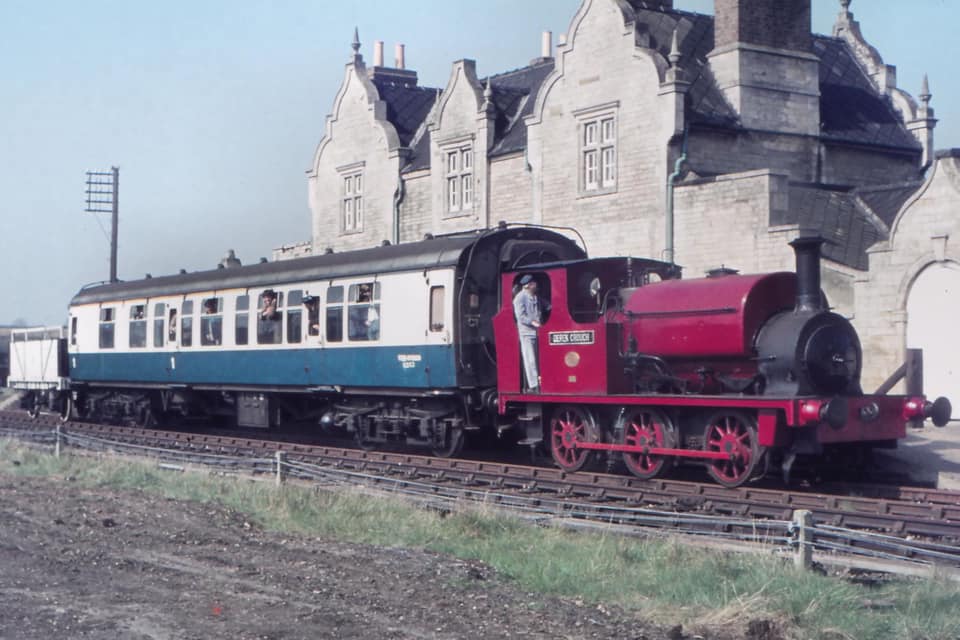
On Sunday the 7th April 1974, at the head of one BR Mk1 carriage, ‘Derek Crouch’ hauled the first train in preservation along the new Nene Valley Railway, filled with members of the railway, leaving the society HQ at Peterborough sugar beet factory and up to the soon to be new main base of Wansford. Here the loco ran round, collected a wagon that had been delivered for the society and after a short while headed back to the factory, a return journey of approximately 10 miles. A couple of days later the train was repeated, this time for local dignitaries and officials to examine the newly preserved line.
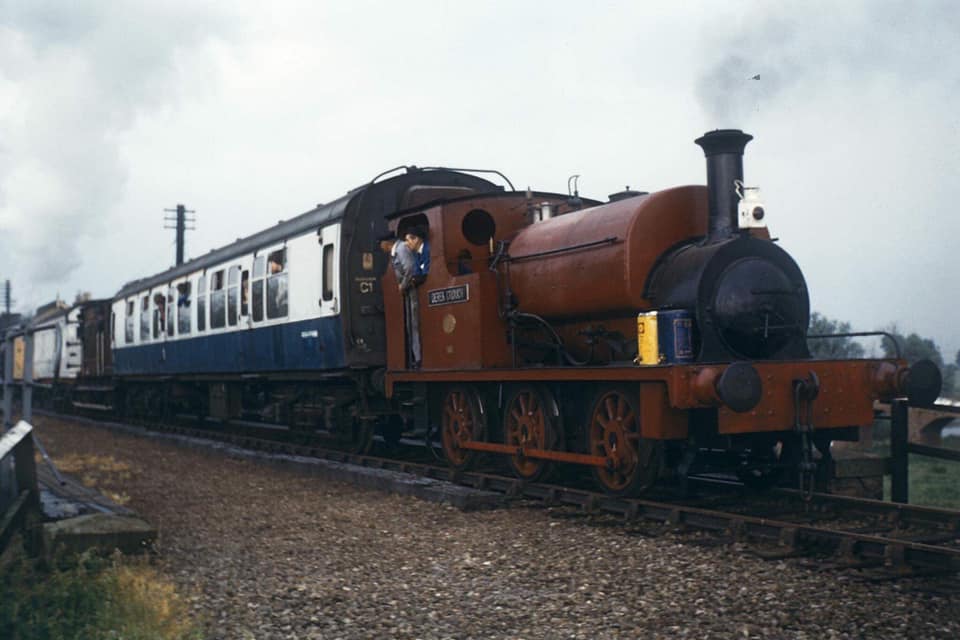
‘Derek Crouch’ ran at the Wansford open days, but as bigger locomotives arrived, the engine was laid up out of use. It became the Wansford gate guardian and was plinthed at the entrance to the station until the new station building was built, where it was moved and positioned in a siding with the other out of traffic locos until the 2000s where it was moved undercover for the first time in almost 40 years.
In 2012, and looking for a project, I began a cosmetic restoration on the loco, which very quickly became evident it needed much more than just a needle gun and repaint. The restoration took two years, and I was joined with two other members, Jake (17) and Joe (19), and myself being 22 when the project started. We formed The Small Loco Group, and learnt a variety of skills, such as machining, welding, plate forming, power tools amongst other things, as well as taking two other locos under our umbrella, a 16” Hunslet ‘Jacks Green’ that used to work at Nassington Ironstone Quarry which we have also undertaken a cosmetic restoration, and a Danish F class tank engine no.656 which is coming to the end of an overhaul led by a team of volunteers we have assisted with.
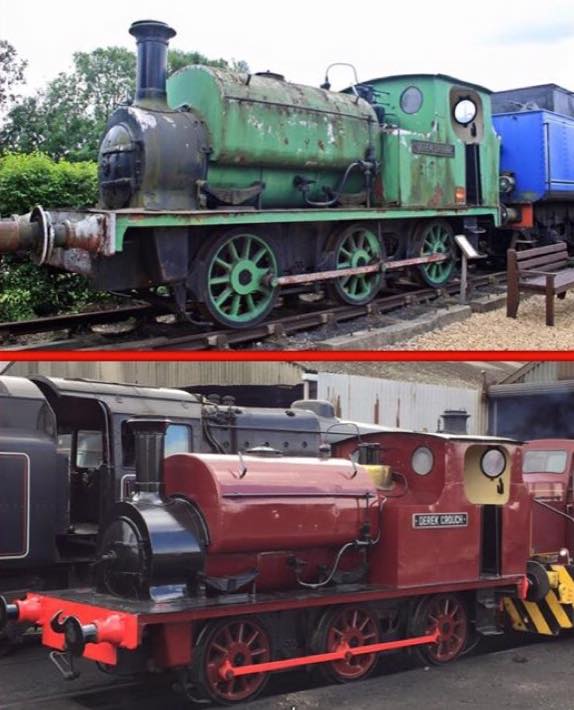
Myself and Joe have both trained and qualified as boilersmiths through the BESTT (Boiler Engineering Skills Training Trust) and Jake is a qualified machinist, so between us we have acquired the skills and knowledge over time to be able to bring skills in house to the group to be able to restore the engines to operational condition. The group has since expanded and now as around 15 members, all predominantly aged between 18-30, which is brilliant for keeping the heritage skills alive in the younger generation for the future.
‘Derek Crouch’ was picked as our first full overhaul to undertake for a variety of reasons – it is a small loco, so is manageable for a group of new volunteers learning skills to work on, and isn’t something that through size alone becomes daunting, 2024 sees the locomotive turn 100 and also sees the 50th anniversary of the first train in preservation pulled along the Nene Valley by ‘Derek Crouch’ – which the 7th April also falling on a Sunday just like it did 50 years ago. The locomotive also has a place in many of the hearts of our older members and is one of the railways first locomotives. It has a rich history and heritage behind it, and is also one of only three of the class preserved.
The strip down for the locomotive began in August 2020, with the boiler removed after just two weeks of work.
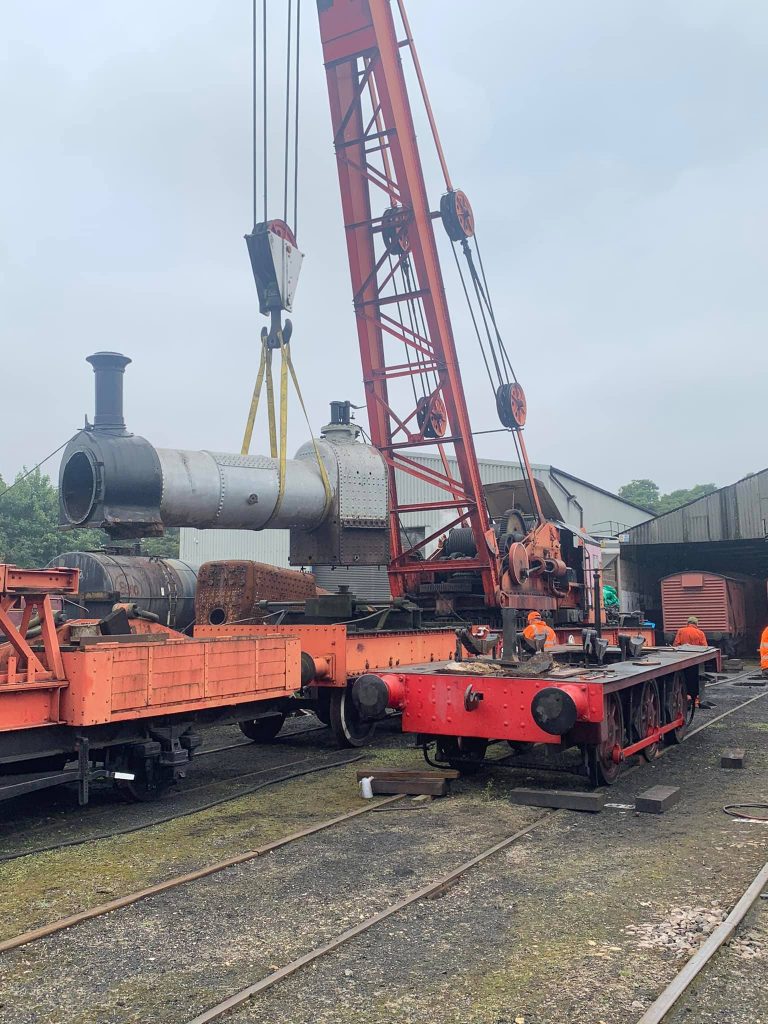
The chassis then went into our running shed for further dismantling over a pit to give better access, while the boiler was de-tubed ready for inspection.
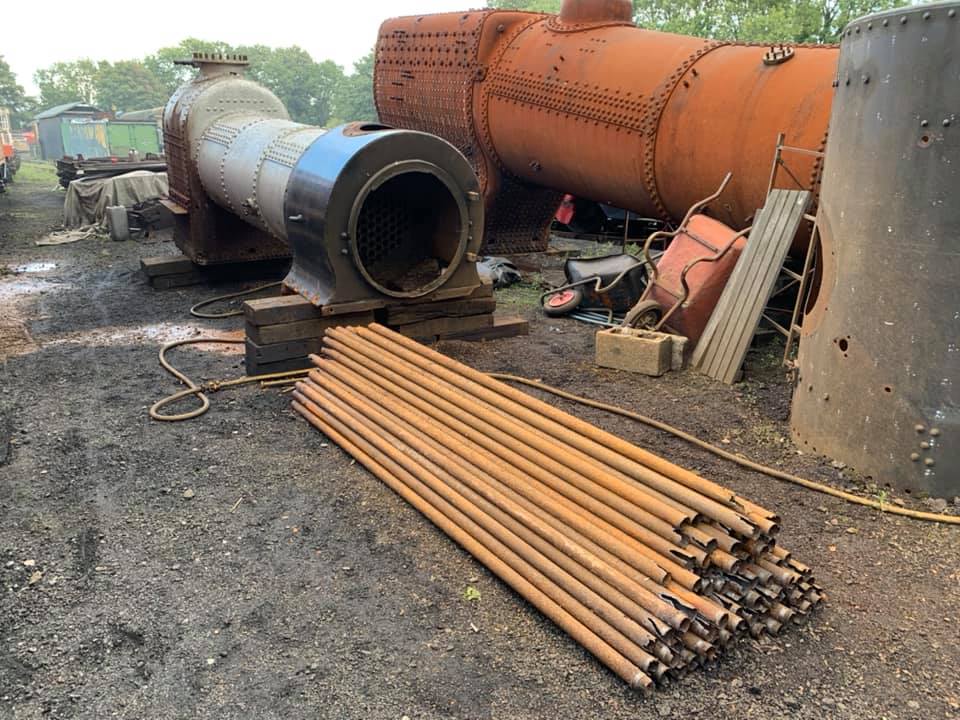
With the motion removed the frames were taken back outside to be pressure washed. It was at this point a crack was discovered on the back of the left hand cylinder casting. The back cover was removed, and as the nuts were loosened the casting started to move slightly. With the cover removed, it soon became evident it was a fairly serious crack running from the top of the back face, down to9 the bore and then approximately 2/3s the length of the bore itself. At this point a repair procedure was thought up, with metal stitching and cylinder liners a good option. However as the block was cleaned up it soon became evident it was at the end of its life, the structural webs showing severe corrosion, and the top of the block thinning in places, so much so a hole appeared behind the steam inlet flange. The plan changed at this point from repair to replace.
We have been extremely lucky to have been awarded a grant for £20,000 by the AIA (Association for Industrial Archaeology towards the overhaul of the loco. This has been a massive award for the project, as this will see the cost of the replacement block cast and machined ready for the loco to re-enter service. It is also able to support the cost of other works needed, such as tyre turning and journal work on the wheelsets, making of new parts for the new chimney, material for replacement sections of the back of the frames and doubling plates, and will also go towards the cost of new material for new bearings. Without the awarding of the grant the project would definitely not be in such a good position as it is now, and has played a massive part in providing a bright future for ‘Derek Crouch’. The locomotive is currently in the Heavy Overhaul Workshop at Wansford, and is able to be viewed from our public viewing gallery.
We are looking to raise a total of £35,000 which should see the locomotives overhaul complete. We currently have raised approximately £30,000 but we still need to raise more to see the job through. If you would like to support us, please consider donating to our project, either by sending donations into the railway FAO Nathan Wilson, or via our JustGiving page on the link below. A contribution to JustGiving is voluntary, and can be removed by selecting ‘other’ and entering £0.00 if you would only like to contribute to our appeal. Any donation, no matter how great or small is always greatly appreciated by our team and will go to supporting heritage skills in the younger generation as well as returning a near centurion to steam, for the first time in almost 50 years!
https://www.justgiving.com/crowdfunding/derekcrouchoverhaulappeal?utm_term=3RVr34Kgv
Here are some more pictures of the work in progress and those undertaking it.
